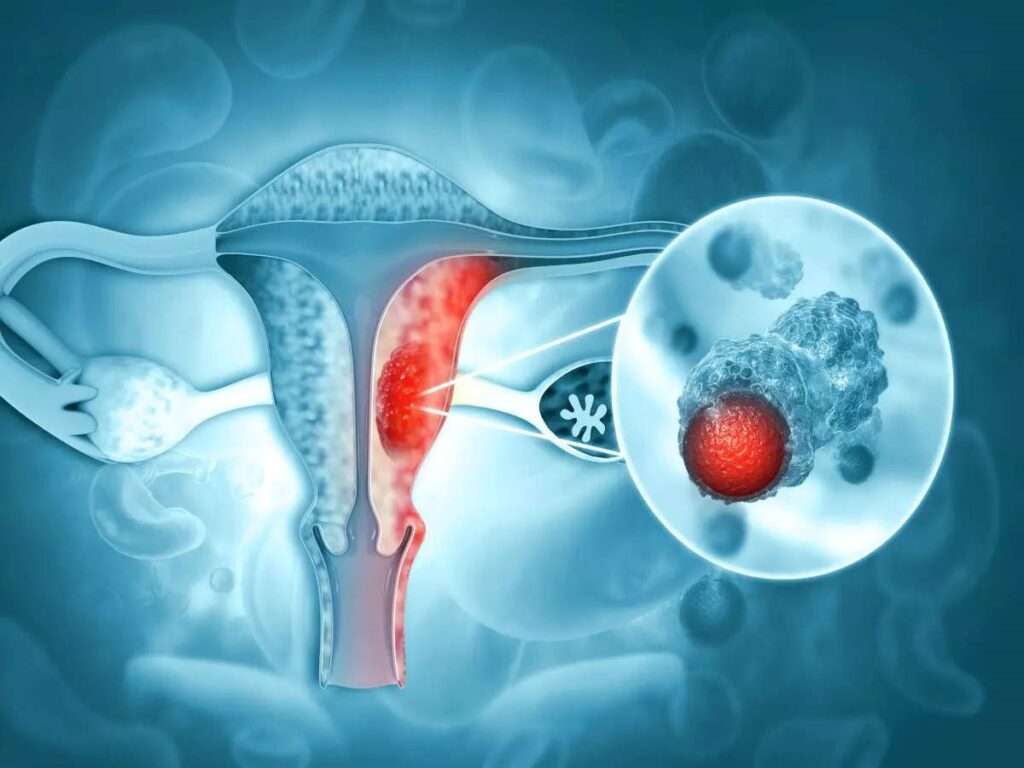Surgery for Ovarian Cancer

Ovarian cancer is most common in post-menopause women but can affect women and people with ovaries at any age. Common symptoms include persistent bloating, abdominal or pelvic pain, no appetite or feeling full quickly and needing to urinate more frequently. Early diagnosis of ovarian cancer can make the cancer more treatable.
Standard treatment for ovarian cancer involves surgery to stage the disease and remove all visible diseases. This is often alongside additional chemotherapy. Traditionally this surgery has been performed via a laparotomy (where a surgical incision is made into the abdomen). Treatment options include surgery, chemotherapy, and occasionally radiotherapy.
A) Surgery
Most women will require surgery. The type of surgery will depend on the cancer stage and grade and on your wishes. Surgery usually involves removing both ovaries and the fallopian tubes (called a bilateral salpingo-oophorectomy), the womb and cervix (called a total hysterectomy), and the layer of fatty tissue in the abdomen known as the omentum (called an omentectomy). Biopsies and some lymph nodes may also be taken from the abdomen and pelvis. This helps to give an accurate idea of the stage the cancer has reached and to decide whether you need further treatment.
If the cancer has spread to other areas of your pelvis or abdomen, your surgeon will remove as much of the cancer as safely possible. The less cancer left in your body after surgery, the more likely chemotherapy is to work.
If the cancer is at an early stage and you wish to become pregnant, you may only need to have the affected ovary and tube removed (salpingo-oopherectomy ).The benefits and risks of this form of surgery and the possibility of egg or embryo freezing before treatment will be discussed.
Surgery may not always be possible because of where the cancer is or if you are not well enough for an operation. If this is the case, chemotherapy is given before the surgery to shrink the tumor.
Studies have now suggested the feasibility and safety of robotic ovarian cancer surgery in a select group of women. The usage of the robot in minimally invasive staging operations in women with early-stage ovarian cancer is widely accepted. Recent feasibility studies have now also identified that the robot can also be used as a tool in more advanced-stage ovarian cancer operations.
Incorporating robotic surgery has the potential benefits to decrease the length of stay, blood loss, and postoperative pain, and aids in a quicker return to normal activity. Moreover, if women need chemotherapy there is less risk of any delay in starting this.
A robotic approach can potentially also be used in a select group of women with significant co-morbidities who are at a higher anesthetic risk when undergoing open surgery. Prospective multicentre studies are currently underway to establish whether this is also feasible and safe without compromising overall survival in advanced ovarian cancer.
B) Chemotherapy
Chemotherapy treats cancer by using anti-cancer (cytotoxic) drugs to kill cancer cells. Ovarian cancer is usually very sensitive to chemotherapy. It is usually given after surgery. Sometimes it may be given before surgery, usually to help shrink the tumor and to make it easier to remove. This is called neoadjuvant chemotherapy.
C) Radiotherapy
Radiotherapy is a treatment that uses high-energy radiation beams to target rapidly growing cancer cells. Radiotherapy is not often used in the treatment of ovarian cancer but your doctor may recommend it in some circumstances such as for shrinking a secondary tumor and/or for the treatment of pain.
Recovering from ovarian cancer surgery
Talk with Dr. Aneeta Talwar, Bangalore’s Best ovarian Cancer Treatment in Bangalore, about side effects you might have right after Surgery and later on.

